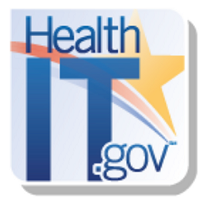 By Teresa Zayas Caban/ Chief Scientist ,
By Teresa Zayas Caban/ Chief Scientist ,
Kevin Chaney, MGS/ Health Scientist Administrator, ONC,
Michael Painter/ Senior Program Officer, Robert Wood Johnson Foundation , and
Chris Dymek/ Director, Health IT Division, Agency for Healthcare Research and Quality (AHRQ)
Twitter: @ONC_HealthIT
Artificial intelligence (AI) – the ability of computers to learn human-like functions or tasks – has shown great promise. What was previously considered the sole domain of human cognition is already being leveraged successfully across many industries. Now, the technology sector is witnessing what appears to be important new advances in AI that are bringing a new wave of interest for how it might shape the future of health and healthcare.
The rapid digitization of health data through the use of heath information technology (health IT) in the United States has created major opportunities in the use of AI. Innovators and experts see potential in using digital health data to improve healthcare and health outcomes from the home to the clinic to the community. Yet, current AI is powered and limited by its access to digital data. With a range of health-related data sets, AI could potentially help improve the health of Americans.
There is also some risk.
To cut through the hype, assess the potential realistic implications of AI applications in health and healthcare, and understand the risks, the Office of the National Coordinator for Health IT (ONC) and the Agency for Healthcare Research and Quality (AHRQ), with support from the Robert Wood Johnson Foundation, turned to JASON, an independent group of scientists and academics that has been advising the Federal government on matters of science and technology for over 50 years, to consider how AI might shape the future of public health, community health, and healthcare delivery.
Specifically we asked JASON to focus on technical capabilities, limitations, and applications for AI in health and healthcare that can be realized within the next ten years. This was a logical follow on a prior JASON report “A Robust Health Data Infrastructure,” which included recommendations for interoperability that resulted in the development of the Shared Nationwide Interoperability Roadmap.
JASON on AI, health, and healthcare
In the new report “Artificial Intelligence for Health and Health Care,” JASON concludes that the broad advances in AI are significant and real. The experts outline three forces that explain why the time may be ripe for AI in health:
- Frustration with the existing – or legacy – medical systems among patients and health professionals
- Ubiquity of networked smart devices in society
- Comfort with at-home services like those provided through Amazon and other technology companies
The report lists a series of findings about the current state of AI in health and healthcare, and offers recommendations that could accelerate the use of AI in and out of the clinical setting.
What is clear from the report is that without access to high quality, reliable data, the promise of AI will not be realized: the increased availability of digital health data could allow for the use of AI in clinical practice, though issues regarding the quality of existing data must be addressed. Though many of us already use our smartphones and other smart devices in our daily lives, through the availability of open application programming interfaces (APIs), there are still concerns about how health data can be integrated into new tools, as well as equitable distribution of these potentially powerful tools.
While the increased availability of high quality digital health data can facilitate the use of AI in clinical practice, the accessibility, privacy and security of that data must also be addressed.
Next Steps
It is important to understand the limitations of AI in health and healthcare. The maxim “do no harm” can perhaps best be upheld by the development of processes and policies to ensure the transparency and reproducibility of AI methods and results.
JASON supports the collection and curation of new health data sources for AI applications as well. For example:
- Capturing smartphone data: Smartphones are becoming a common way for people to monitor their health. We need to integrate the data generated from these devices to support AI applications.
- Integrating social and environmental data: We need to foster capabilities to capture and integrate data on environmental exposures and social behaviors in AI health applications, as health outcomes are very affected by these factors.
- Supporting AI competitions: We should consider additional support for AI competitions, which have already shown promise, to further advance data generation and AI development.
Moving forward, ONC and AHRQ will work closely with other Department of Health and Human Services’ agencies, including the National Institutes for Health (NIH) and the Food and Drug Administration (FDA) to define and identify possible opportunities for the use of AI in their efforts to improve biomedical research, medical care, and outcomes, including work related to the advent of precision medicine.
The recommendations in the new report underline the importance of ONC’s efforts toward interoperable and standardized health data and AHRQ’s efforts to effectively use those data to improve the quality and safety of patient care. These efforts will improve capabilities to exchange and appropriately use high-quality health data – critical elements in powering AI efforts in health and healthcare.
But most importantly, the report indicates that the use of artificial intelligence in health and healthcare is promising – and doable.
We are excited about the possibilities that AI has to improve healthcare quality, help clinicians take the best care of their patients, and empower patients to take control of their own health. We encourage you to review the full report to see the findings and recommendations.
This post was originally published on the Health IT Buzz and is syndicated here with permission.
